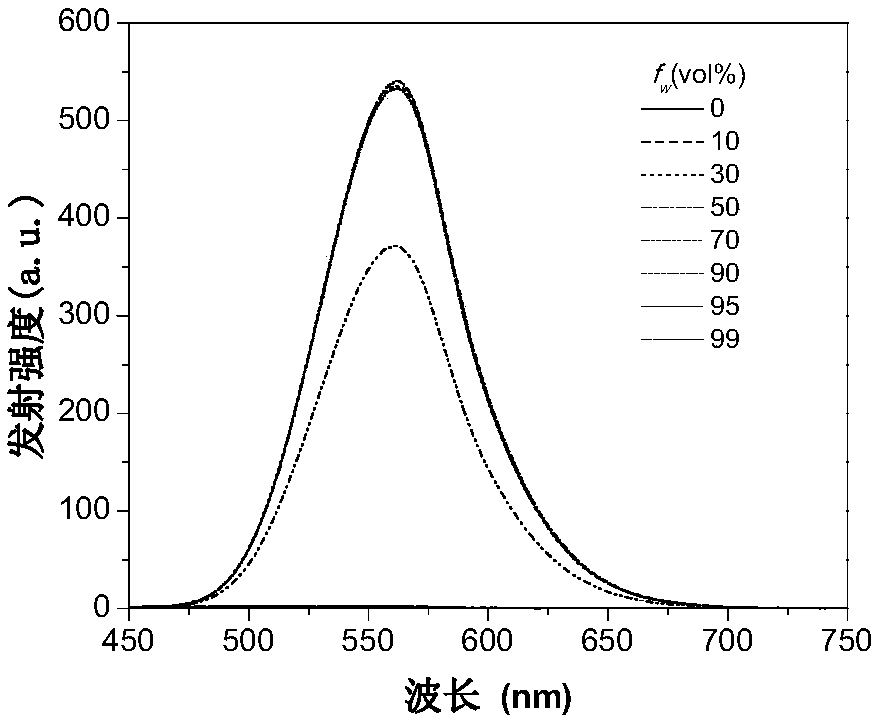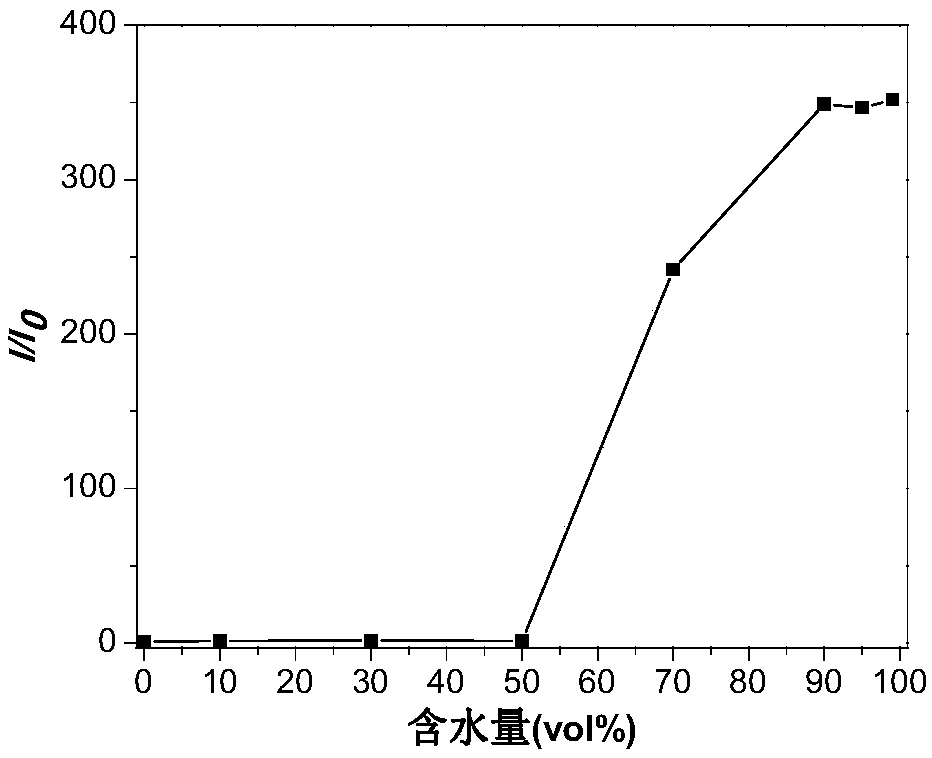Aggregation-induced emission type fluorescent materials, preparation method and application
A technology of aggregation-induced luminescence and fluorescent materials, applied in the application field of labeling lipid droplets, can solve the problems of fluorescence quenching and low solid quantum yield, and achieve good biocompatibility
- Summary
- Abstract
- Description
- Claims
- Application Information
AI Technical Summary
Problems solved by technology
Method used
Image
Examples
Embodiment 1
[0039] 1. In a nitrogen atmosphere, add 2mL (17.86mmol) m-aminoanisole, 10mL (89.3mmol) iodobenzene, 10g (89.1mmol) potassium tert-butoxide into 30mL toluene, then add 644mg (3.572mmol) 1, 10-phenanthroline and 680 mg (3.572 mmol) of cuprous iodide were reacted under reflux at 125° C. for 24 hours, and purified by column chromatography (pure petroleum ether as the eluent) to obtain compound I with a yield of 75%.
[0040]
[0041] 2. Dissolve 2g (7.27mmol) of compound I in 10mL of dry dichloromethane, then add 5mL of dichloromethane solution containing 1.03mL (10.9mmol) boron tribromide under an ice bath, then connect a condenser tube to condense Connect the drying tube on the tube, stir the reaction for 24 hours after naturally warming up to normal temperature, add water to quench after the reaction is completed, spin off the dichloromethane, extract with ethyl acetate and water, then column chromatography (eluent is petroleum ether and acetic acid Ethyl ester volume ratio...
Embodiment 2
[0049]In step 4 of this embodiment, the p-fluoroaniline in embodiment 1 is replaced with equimolar p-methoxyaniline (formula IV-2), and the other steps are the same as in embodiment 1 to obtain the fluorescent material shown in VI-2, Its yield is 35%.
[0050]
[0051] The structural characterization data of the obtained fluorescent material is: 1 H NMR (300MHz, DMSO) δ8.78(s, 1H), 7.67-7.17(m, 13H), 7.05(d, J=8.7Hz, 2H), 6.41(d, J=7.4Hz, 1H), 6.05 (s,1H),3.80(s,3H).
Embodiment 3
[0053] In step 4 of this embodiment, the p-fluoroaniline in embodiment 1 is replaced with equimolar p-cyanoaniline (formula IV-2), and the other steps are the same as in embodiment 1 to obtain the fluorescent material shown in VI-3, which The yield was 32%.
[0054]
[0055] The structural characterization data of the obtained fluorescent material is: 1 H NMR (300MHz, CDCl 3 )δ8.13(s,1H),7.75(d,J=8.7Hz,2H),7.64(d,J=8.5Hz,2H),7.41(t,J=7.6Hz,4H),7.29(d, J=7.4Hz, 2H), 7.23(dd, J=11.0, 3.7Hz, 5H), 6.51(dd, J=8.9, 2.2Hz, 1H), 6.42(d, J=1.9Hz, 1H).
PUM
 Login to View More
Login to View More Abstract
Description
Claims
Application Information
 Login to View More
Login to View More - R&D
- Intellectual Property
- Life Sciences
- Materials
- Tech Scout
- Unparalleled Data Quality
- Higher Quality Content
- 60% Fewer Hallucinations
Browse by: Latest US Patents, China's latest patents, Technical Efficacy Thesaurus, Application Domain, Technology Topic, Popular Technical Reports.
© 2025 PatSnap. All rights reserved.Legal|Privacy policy|Modern Slavery Act Transparency Statement|Sitemap|About US| Contact US: help@patsnap.com



